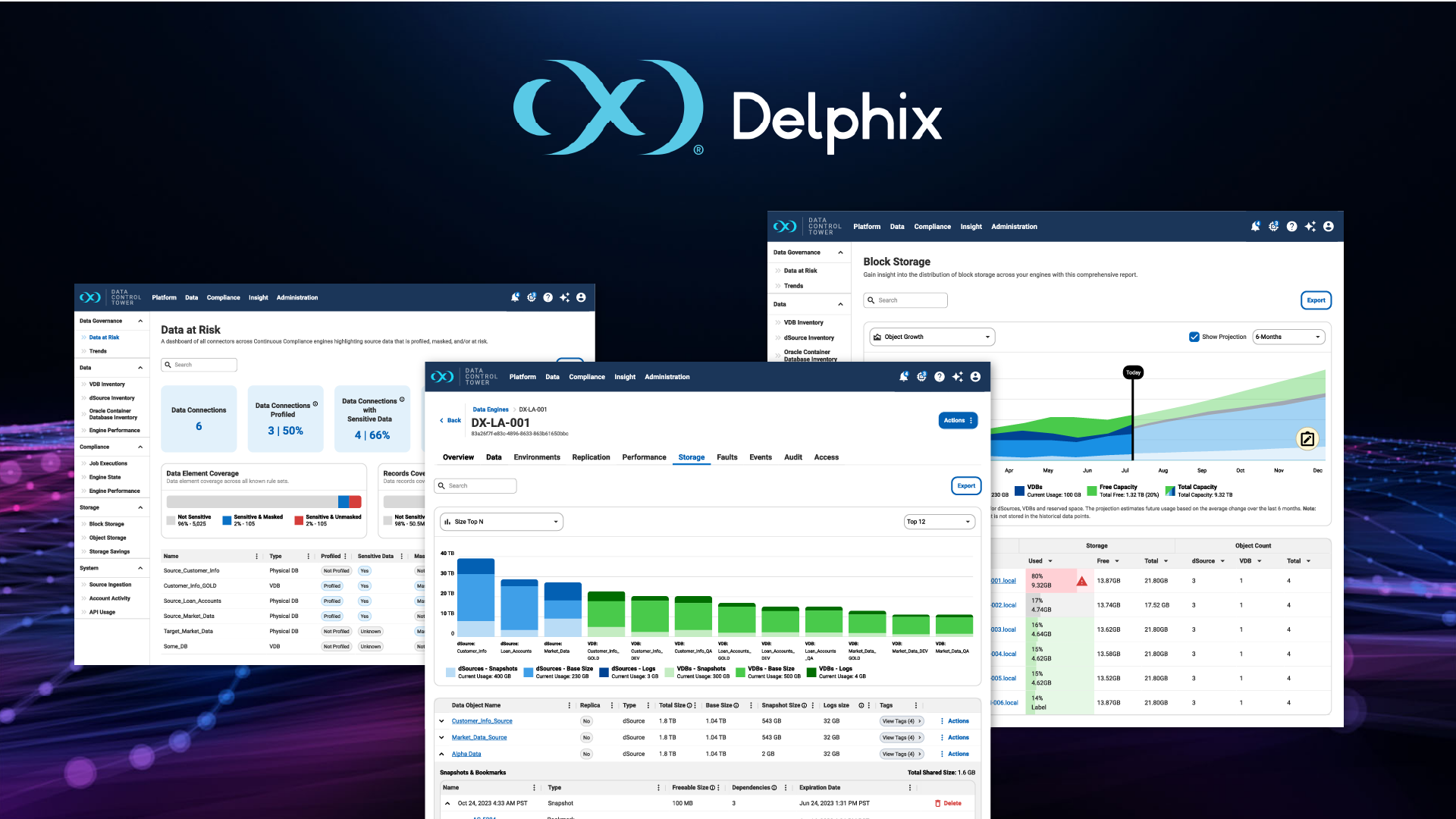Delphix - Data Control Tower
Product Background
Delphix provides enterprise data management solutions through two core products: Virtual Databases (VDBs) and Data Masking. VDBs enable companies to create space-efficient database environments for development and testing, while Data Masking allows organizations to protect sensitive information by replacing production data with realistic but anonymized data in non-production environments.
Data Control Tower (DCT) evolved from an API-only platform to become a unified management interface that centralizes control over distributed Delphix engines across an enterprise's infrastructure.
Problem
Enterprise customers struggled to efficiently manage multiple Delphix virtualization and masking engines distributed across their infrastructure. Each engine required individual management and monitoring, creating operational overhead and complexity in maintaining consistent data governance.
The distributed nature of these engines made it challenging to maintain visibility across environments, track resource usage, and ensure consistent security policies, leading to increased management complexity and potential compliance risks.
Key Considerations
Technical Complexity: Deep understanding of Delphix's fundamental architecture was crucial for designing intuitive interfaces that accurately represented complex backend operations across distributed engines.
Workflow Integration: Unify management of distributed virtualization and masking engines while maintaining the power and flexibility of individual engine capabilities. Special focus was needed on simplifying complex features like Self-Service data management into more intuitive workflows.
Enterprise Scale: Design solutions that accommodate large-scale deployments while providing efficient central management tools for administrators overseeing numerous engines across different locations.
Feature Simplification: Transform complicated technical concepts into user-friendly operations without losing functionality. The Self-Service module particularly needed reimagining to better serve its target users.
Access Control: Design a flexible authorization system that could accommodate complex enterprise security requirements while remaining manageable at scale.
Solution
Centralized Management Interface: Created a comprehensive web interface that provides unified control over distributed Delphix engines, evolving from the initial API-only version.
Streamlined Multi-Engine Workflows: Designed intuitive processes that enable administrators to manage multiple engines through a single interface, simplifying operations like database provisioning and mask configuration.
Enterprise Visibility: Developed comprehensive monitoring and reporting capabilities to provide clear visibility across all engines and environments.
Self-Service Transformation: Reimagined the complex Self-Service addon into an integrated workflow that simplified data management for development teams. Consolidated multiple confusing actions (refresh, rewind, rollback) into a single, guided "refresh" process that clearly communicated data state and timing. This transformation significantly improved developers' ability to manage their own database environments.
Attribute-Based Access Control: Implemented a sophisticated ABAC system that allowed granular control over user permissions based on attributes like role, department, environment, and data sensitivity. This enabled enterprises to implement precise access policies while maintaining scalable user management.
My Contributions
Product Vision and Strategy: Led the development of DCT's product ethos and established core product requirements, shaping how the platform would serve enterprise needs while maintaining simplicity and usability. This foundation ensured the product would effectively address customer pain points while staying true to its mission of simplifying complex data management tasks.
Design Leadership: Served as the lead designer for the multi-year Data Control Tower initiative, driving the project's user experience vision and execution from concept to delivery. This role involved coordinating with multiple stakeholders to ensure the design direction aligned with both technical capabilities and business objectives.
Technical Partnership: Collaborated closely with engineering teams to understand engine capabilities and constraints, ensuring designs aligned with technical requirements.
Workflow Optimization: Analyzed existing customer processes to identify pain points and opportunities for centralized management and automation.
Interface Architecture: Developed a coherent design system that unified engine management while maintaining flexibility for future expansion.
High-Fidelity Prototyping: Built detailed, interactive prototypes that closely mirrored the final developed product, enabling effective user testing and providing clear implementation guidance for engineering teams.
Results
Operational Efficiency: Significantly reduced time required for managing multiple engines through centralized control and monitoring.
Adoption Success: Successfully transitioned customers to the centralized management interface, improving visibility and reducing operational complexity.
Enhanced Security: Simplified multi-engine management processes reduced risk of misconfiguration and improved compliance capabilities across distributed environments.







